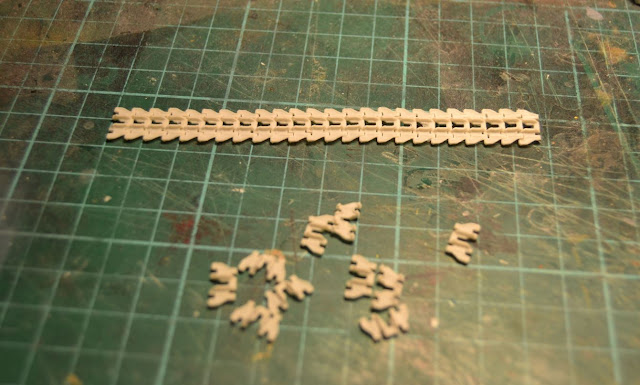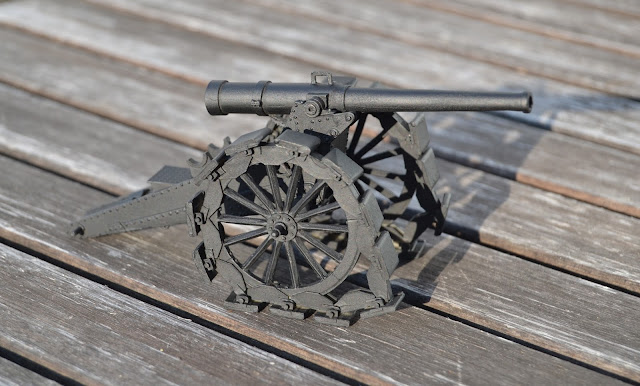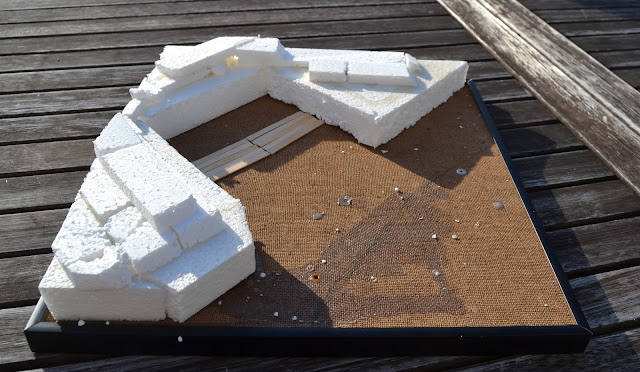I finished my fourth module representing the bakelite factory in Nystrup. The idea was to represent the section of the gravel railway winding itself through Nystrup's small industrial district. With the room I have available for modelling and storing models and modules a model of that section in 1:35 scale can of course only be of a very short length. I like the contrast to my more rural modules and I have now begun to wonder how my next module is going to look.
 |
| The Land Rover from Nystrup's volunteer fire brigade parked in front of Banke's Bakelite. |
I had for a long time searched for the elusive Roadcraft Land Rover fire tender kit. I found it and finished building it in 2017. A great kit with a great potential for extra detailing. I built it mostly out of the box, though, only adding a fire man's helmet and other small parts. One week later I had the locomotive jacks from Blitz finished and delivered by heavy load trailer to the loco shed in Nystrup.
In the beginning of the year my model of an old Danish Alpha E 10 loco rolled off the worktable. A peculiar loco and not remotely connected to 'Danish design' so famous for its "simple, elegant and pure characteristics". Although in the case of the E 10 'simple' seems to fit! With a huge '1' on all four sides it clearly shows itself as Nystrup Gravel's first loco.
This year I had the great fortune to help celebrate two anniversaries at the heritage railway where I work as a volunteer. One was the 40. anniversary of the railway itself in May and the 50. anniversary of the closure of the last Danish sugar beet railway in December. On HVB we are fortunate to have a small selection of locos and rolling stock from the sugar beet railways and could form a small train of open beet wagons. Two trains followed the beet train, allowing visiting enthusiasts to take part in several photo sessions along the line.
 |
| The sugar beet train is on its way home after the 50. anniversary running. The sun is setting and the train is fitted with petroleum lamps and the small red rear end signal. |
















































